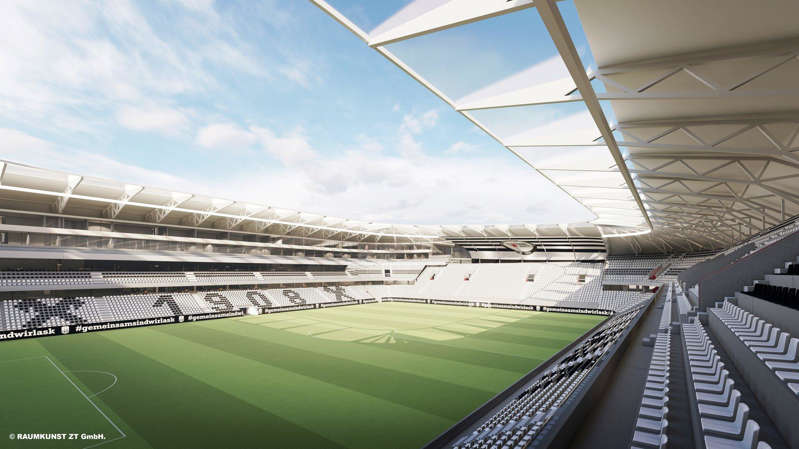Neighboring residents had concerns about the light emissions. With two additional requirements, this is not a problem.
The regional administrative court LVwG Upper Austria has given the green light for the construction of the new Linz stadium on the Gugl. It imposed two additional requirements regarding light emissions and rejected the complaints of several neighbors overall. The court announced in a press release on Tuesday.
The neighbors had stated in their complaint that the building project was not subject to an environmental impact assessment (EIA). Furthermore, it is a new building – but the project is declared as a renovation and extension. In addition, they would be violated in their subjective neighbor rights by immissions from noise, air and light.
The LVwG checked the procedural documents, called in experts and held an oral hearing. The verdict: The complaint was to be upheld insofar as two additional conditions relating to light emissions were to be stipulated.
Accordingly, the facade lighting must be designed in such a way that the headlights shine from top to bottom or not in the direction of the higher-lying window areas of the facades of neighboring residential properties. The self-illuminating light panels must be designed in such a way that the maximum luminance levels of the relevant standards are observed. Otherwise, the complaints should be dismissed as unfounded.
Because the arrangement of the new floodlight system under the stadium roof and the newly planned floodlight system on the training ground result in an improvement in the lighting situation in terms of glare for the neighbors. The execution of the project also leads to an improvement in the noise situation for the neighbors, and the valid limit values for air pollutants are not exceeded on their properties.
Regarding the question of an EIA obligation for the construction project, the LVwG stated that this had already been denied by the Upper Austrian provincial government responsible for this in a legally binding decision. Regarding the objection that the construction project was a new building instead of a conversion and extension, the court found that no violation of subjective, public rights of neighbors could be derived.

